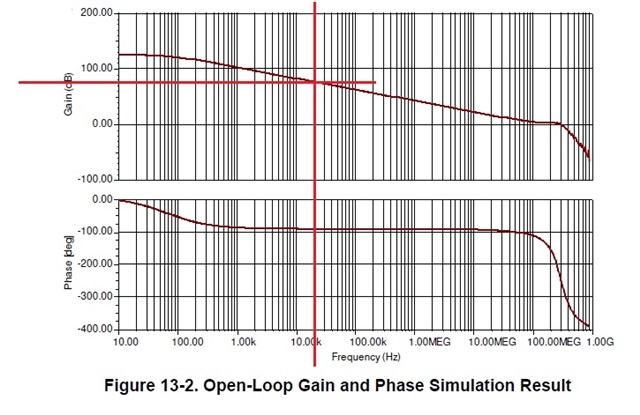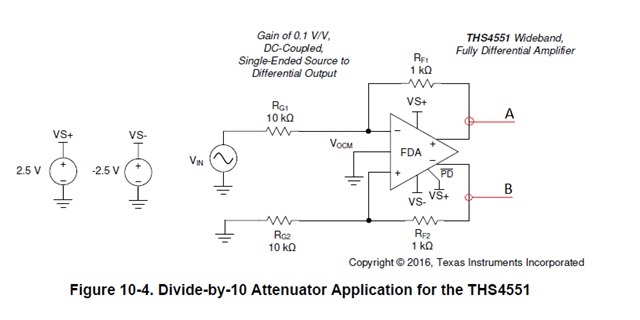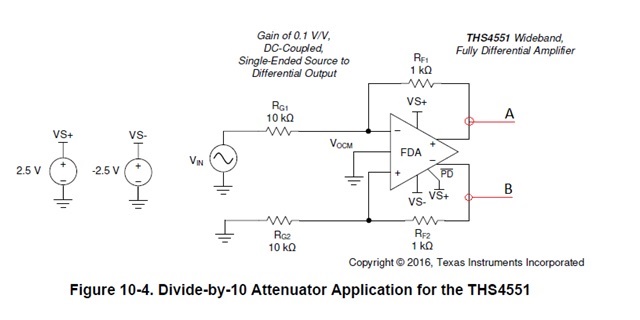Other Parts Discussed in Thread: ADS127L11, THS4552, TINA-TI
Hi Team,
Our customer would like to know more information about connecting the THS4551 with ADS127L11. According to our customer,
I would like to know the gain band of the AOP THS4551, after the picture below in the DS :
See the picture Open-Loop Gain

At 20 kHz, I have about 80 dB -> So the gain is 10^80/20 = 10,000.
So if I use this connection I can have a gain of around 10,000 right?
See the picture 'Attenuator Application'

Of course this assembly is in attenuator but if I modify Rf1 and Rg1 I'll have the correct amplifier coefficient. For example if I need amplifier coefficient 1500 thus Rf1 = 15k and Rg1 =1k right ? Thanks for your help.
Regards,
Danilo


